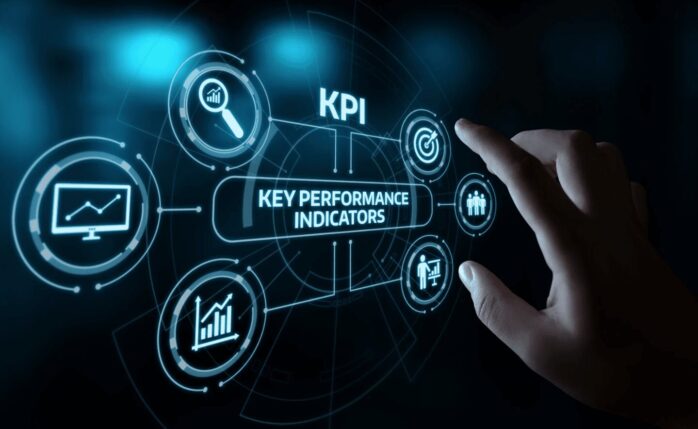
Data intelligence is increasingly becoming one of the critical skills in today’s digital world. It’s a process used to collect and analyze data from different sources, transforming it into meaningful patterns and insights.
For businesses, understanding it helps ensure efficient methods are implemented along with better decisions made that will ultimately lead to improved outcomes and increased profits or operational efficiency. In this blog post, we’ll explore the basics of data intelligence so readers can utilize it for their needs – no matter what industry they’re in!
What Is Data Intelligence, And Why Is It Essential In Today’s World

Data intelligence is the ability to use data to gain insights that can help inform decision-making in business. It involves gathering, analyzing, and interpreting large amounts of data—from both internal and external sources—to identify patterns, trends, and correlations that can provide valuable information for businesses. It enables organizations to make informed decisions based on real-time insights from their data.
The importance of data intelligence has increased significantly over the past few years as more companies have embraced digital transformation strategies. With access to larger datasets than ever, companies can now leverage AI technologies such as machine learning (ML) and natural language processing (NLP) to create more meaningful analyses from their data. It’s one of the reasons some business owners explore the Microsoft Intelligent Data Platform as a solution.
By leveraging these advanced analytics techniques, businesses can better understand customer behaviors, optimize operations processes, improve product development cycles, and drive growth across their organization.
Key Components Of Data Intelligence

Data intelligence combines data collection, analysis, and visualization to create meaningful insights from the available data. By leveraging these three components, organizations can make better decisions and gain valuable insights about their customers, operations, and more. It is invaluable for understanding how to leverage data best to maximize success. It can help companies identify.
Data collection is the process of gathering and organizing data from various sources. It involves collecting data from different sources, such as surveys, experiments, documents, and other online platforms. Depending on the data collection type, data collection can be conducted through manual or automated processes.
Manual data collection involves entering the data into an appropriate format, while automated data collection involves using tools to scrape data from the internet or other sources.
Data analysis is the process of interpreting, cleansing, and organizing raw data into meaningful insights. It involves exploring the data set to understand relationships and patterns within it. This includes identifying outliers in the data, determining relationships between variables, discovering trends over time, and more. Data analysis also includes creating visualizations from the data to help make sense of it all.
Data visualization is presenting data in an easy-to-interpret and visually appealing form. Visualization tools such as charts, heatmaps, and graphs can help clarify complex datasets, making them easier to understand. Organizations use data visualizations for various tasks, from marketing analysis to financial forecasting.
How Companies Are Using Data Intelligence To Make Decisions

Data intelligence allows organizations to gain meaningful insights from their data, enabling them to make more informed decisions. Businesses use data intelligence in various ways, from developing marketing campaigns to predicting customer behavior. For example, companies can use data analytics and AI to understand consumer purchasing habits and generate targeted advertising campaigns that reach the right people at the right time. Additionally, data intelligence can help organizations identify product trends and use the insights gained to develop new products and services that meet customer needs.
Businesses are also using data intelligence to optimize operations processes and improve efficiency. Companies are using data analysis tools to monitor their production processes – for example, they can analyze data from prior performance to identify areas where improvements can be made to increase efficiency and reduce costs.
Benefits Of Data Intelligence
It can help organizations better understand their customers, operations, and markets. It can also help companies identify new growth opportunities and provide actionable insights to make informed decisions. It is becoming increasingly important in the modern business world as it enables businesses to use their resources more efficiently. By leveraging data analytics tools and AI technologies, companies can reduce costs, optimize operations processes, and improve customer experiences. Ultimately, it gives organizations the insights they need to succeed in today’s competitive digital landscape.
With data intelligence, businesses can gain a competitive advantage and create meaningful insights that will help drive growth. Whether in the retail, finance, or manufacturing industry, understanding it can help you make better decisions and optimize your operations for maximum success. Companies should explore the Microsoft Intelligent Data Platform to learn more about data intelligence and how it can benefit your business.
Best Practices For Implementing Data Intelligence Within An Organization

Data intelligence can help organizations make more informed decisions, but it must be implemented correctly to reap the benefits. Companies must define objectives and key performance indicators (KPIs) before collecting data. Doing this will help ensure the collected data is relevant and valuable for the organization’s needs.
Once the data has been collected, organizations should analyze it to identify relationships, trends, and patterns to extract meaningful insights. Relationships between data points should also be explored to understand customer behaviors and identify areas of improvement. Companies can use advanced analytics techniques such as machine learning (ML) and natural language processing (NLP) to do this.
Finally, businesses should present their data in visually appealing forms to make it easier for stakeholders to interpret. Data visualizations such as charts, heatmaps, and graphs can help make sense of complex data sets and provide actionable insights.
Conclusion
It is an invaluable tool for businesses today, enabling them to gain meaningful insights and optimize operations for maximum success. Organizations can leverage data intelligence with the right strategy to gain insights and make informed decisions. It is an invaluable tool that can help companies reduce costs, optimize operations processes, identify customer trends, and create better user experiences. Businesses can reap the benefits of data intelligence by understanding how to collect, analyze, and visualize data effectively.











